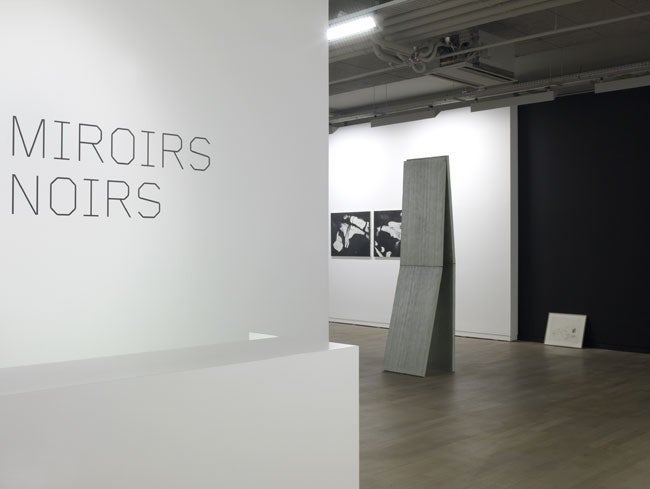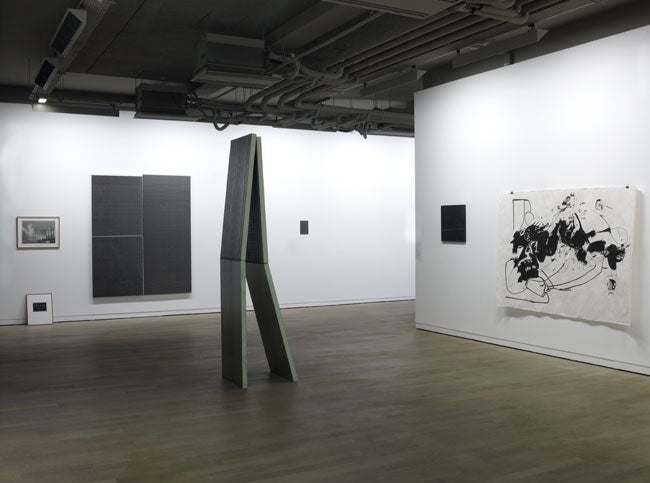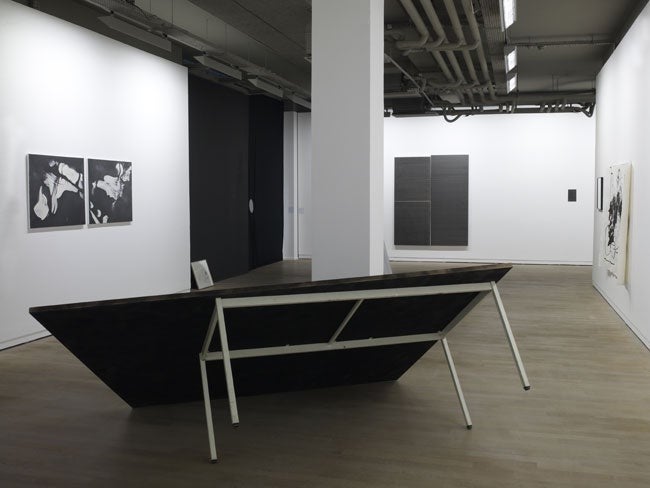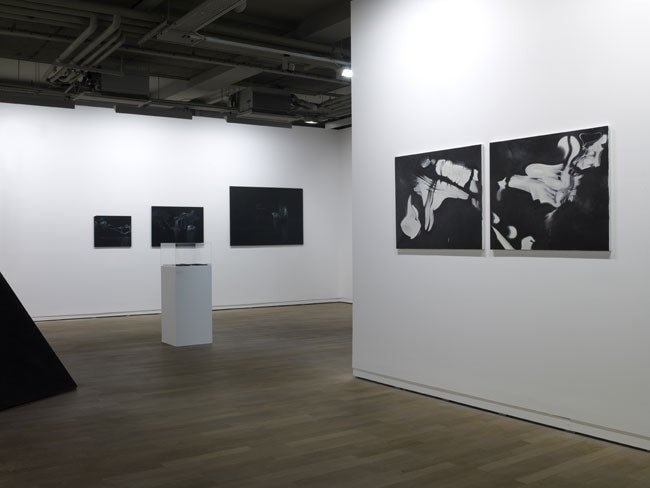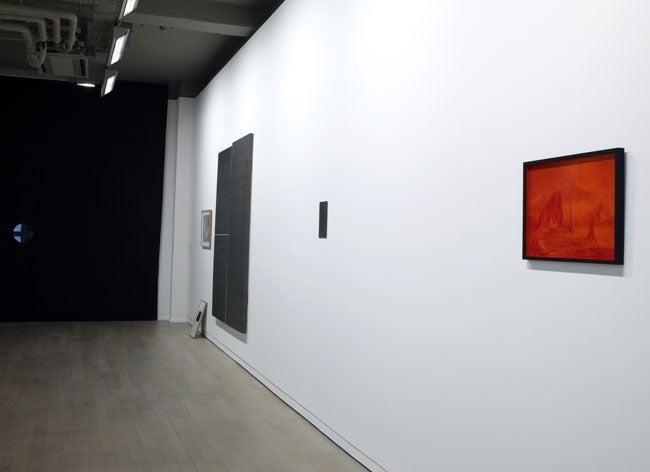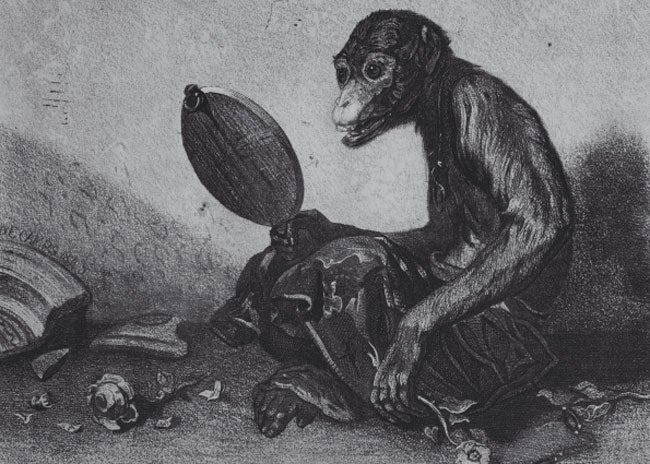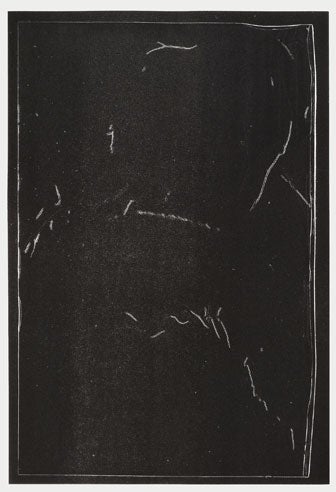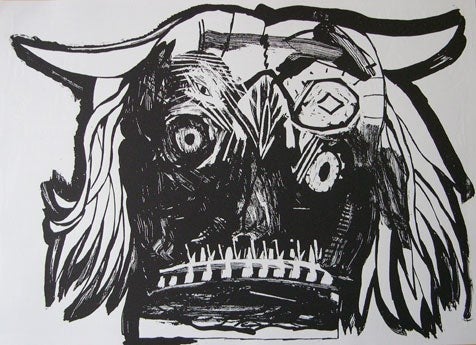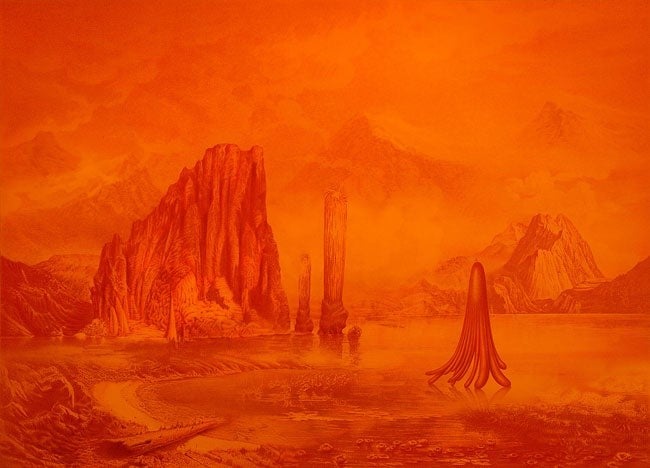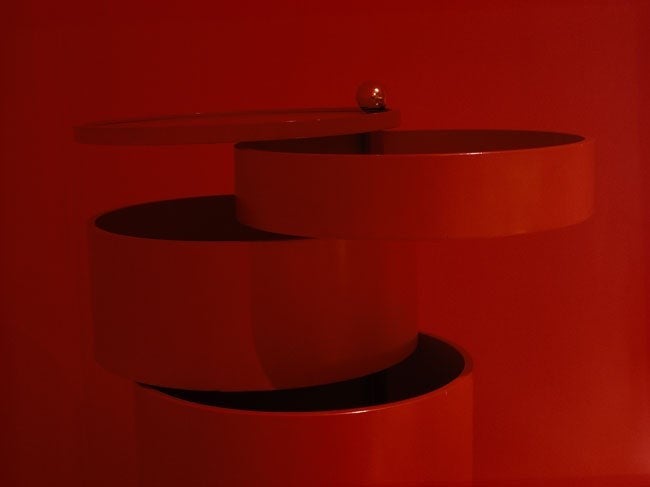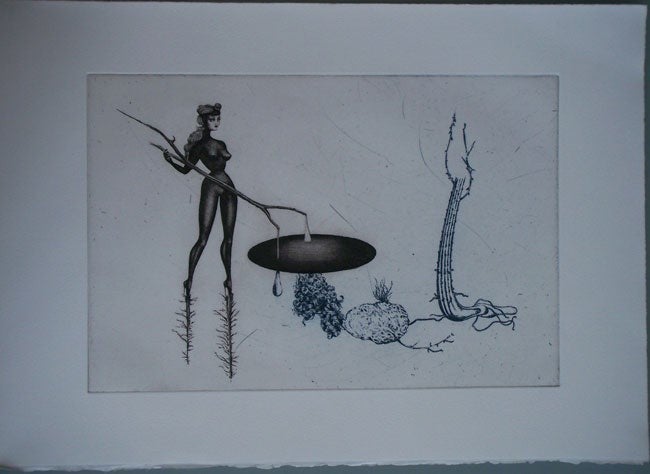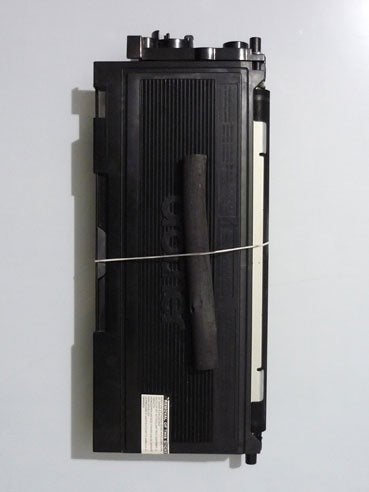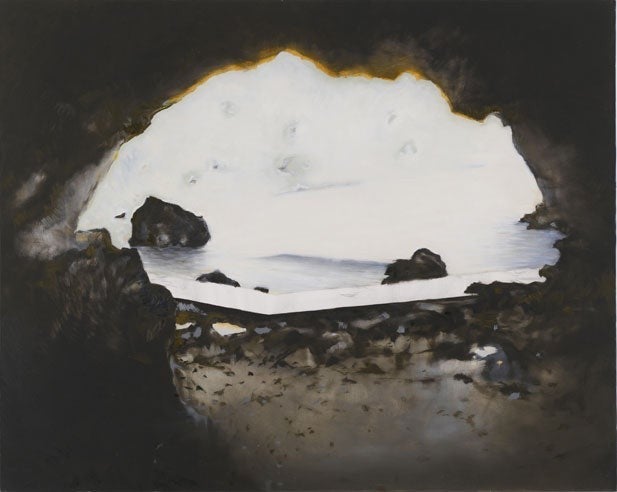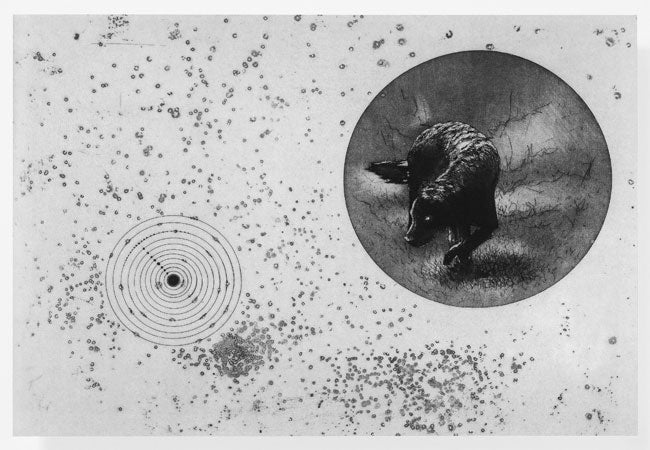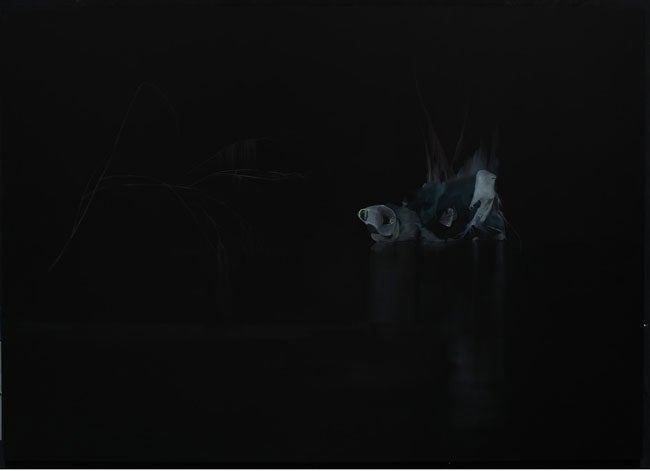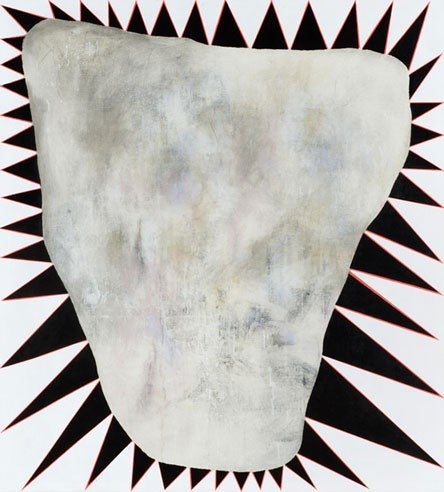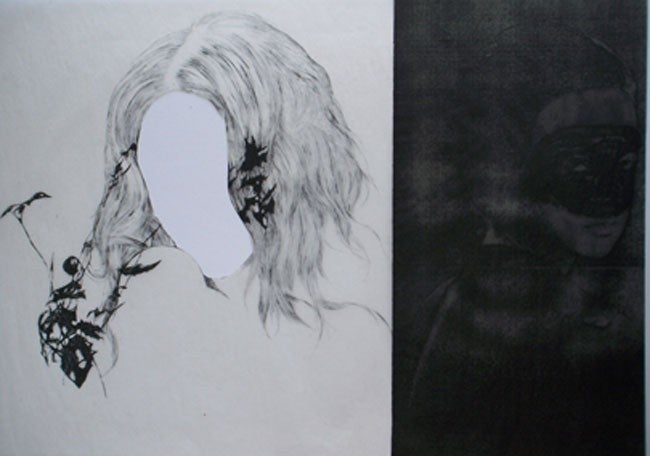Miroirs Noirs

The claude glass, an optical instrument developed during the Renaissance and made by applying a black sheet at the back of plate glass, was used by painters to compose a painting, among other things. The mirror reflects a landscape or an object a painter wishes to represent, but the reflection reduces color and depth, which makes composition easier.
The claude glass does not simply involve a technique, but also a whole symbolic, imaginary, and metaphysical apparatus in which the origin of vision and image lies in darkness and blindness. In this instance, it becomes a means to relate monochromes (understood in an esoteric, not a modernist sense) and contemporary artistic practices: line, form, page.
The exhibition « Black Mirrors » thus intends to approach the issue of images, not from the angle of their reproducibility, but from a hypothesis on their origins and their evolution.
It features a set of engravings by Mïrka Lugosi, Anne Laure Sacriste, Christophe Brunnquell, David Dubois, Pierre Leguillon, Gyan Panchal, Bruno Perramant, and Clément Rodzielski, a selection of their one-off works, but also a selection of works by Gilles Berquet, Charline von Heyl, Wade Guyton, Jutta Koether, Stéphane Kropf, Michael Riedel, as well as old engravings by Eugène Le Roux, John Martin, and Alphonse Masson. The works become as many dark mirrors, multiplying effects of reflection and counter-reflection with one another.
Like any other instrument, the claude glasses does not simply involve a technique, but also a whole symbolic, imaginary, and metaphysical apparatus in which the origin of vision and image lies in darkness and blindness. In his Le Miroir noir, enquête sur le côté obscur du reflet [« The Claude Glasses. An Investigation on the Dark Side of Reflection »] (Paris: Kargo & L’Éclat, 2005), Arnaud Maillet wrote a cultural history of the object. The exhibition itself shows how the dark mirror bridges between contemporary artistic practices that may at first seem antinomic and opposed.
The claude glass makes a reverse hypothesis possible: there would never be such a thing as reproduction, only and always production. A line, a form, a page are never reiterated: there is a continuum between a dark background and a line, a dark background and a form, a dark background and a page. Line, form, and page should be understood as as many manifestations of the remanence of the same dark background, the effects of operations ceaselessly reiterating their own processes, apparitions. They are as many moments in a continuum, which precisely constitutes images as such. The issue of the reproduction vs the original thus loses its relevance; rather, moments are thought of as transitory stops in a process, formations out of a dark background, a silent origin.
The claude glass does not only allow for relations between various modes of artistic practice that may seem mutually exclusive and the monochrome. Most importantly, it also makes it possible to think these practices as exchanging their aesthetic values for those associated with the mirror; or rather, it reveals the inadequacy of these values and their necessary reassignment. The work of the line would thus paradoxically proceed from an abstraction brought to a head, since it is not the reflection of an outside reality, but a reduction out of a uniform background (Christophe Brunnquell, Charline von Heyl, Mirka Lugosi, Bruno Perramant, Anne Laure Sacriste). The claude glasses may thus account for a certain quality of line and drawing which cannot be explained through a reference to reality. As to form, it would have to do with a differentiation out of the same, not as a concentration of disparate elements (Jutta Koether, Gyan Panchal, Michael Riedel). The monochrome then loses its two-dimensionality to become the matrix of any form. Finally, the page is always original insofar as it refers to an original, a variation of which it represents, not so much reproduced as derived from it (Wade Guyton, Pierre Leguillon, Clément Rodzielski). The monochrome, then, is the sum of all these pages, actual and possible, which are distinguishable from it owing to variation. Each image (line, form, page) might then be a moment in these three possible passages, ever started, never completed, whose source is the monochrome, their destination the white wall. Accordingly, the dark mirror is the operating mode for many practices that run the gamut from dark background to its actualization in different forms: Clément Rodzielski’s pages and his large black plates, Anne-Laure Sacriste’s drawings and the paintings in her black series, Wade Guyton’s printouts on book pages and his monochromes made with the same tools – printers.
The claude glass is also a theme in their investigations, not as an object to represent but as the source for as many images (Mïrka Lugosi’s sophisticated drawings, Christophe Brunnquell’s wild drawings, Bruno Perramant’s highbrow paintings, Gilles Berquet’s chance photographs) and « unofficial » subjects of paintings that rise above divides like abstraction/figuration and representation/crisis of representation (Charline von Heyl, Jutta Koether, Stéphane Kropf). These investigations, which resist pigeonholing, also take up the space between image and page (Pierre Leguillon) or between matter and form (Gyan Panchal). There can be no evident and ideal mode of presence for the dark mirror. Rather, any search should look for heterogeneity, fundamentally mixed, heterodox parallels, unfinished and always evolving, such as the appearing line, the emerging form, the page undergoing a process of differentiation. Transferring ink thanks to a matrix which the observer never sees, engravings may then be the analogical means to deal with blindness, the negative, reduction, differentiation even as it seems to affirm that only reproduction is involved (Mïrka Lugosi, Anne Laure Sacriste, Christophe Brunnquell, David Dubois, Pierre Leguillon, Gyan Panchal, Bruno Perramant, Clément Rodzielski here, but also John Martin in the eighteenth century, Eugène le Roux and Alphonse Masson after Décamps in the nineteenth…). Yet for these works as for others, images are only as many claude glasses.
Vincent Romagny
